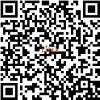*corresponding author
AbstractThis mixed methods study has highlighted that students in lower level of EAL in Ausytalia have used silence to monitor their speeches. The study surveyed 148 student and teachers and results highlighted that teachers did not know about the adult silent period. Findings show that that their silent period was not treated by their teachers due to ‘pedagogical barriers’. Competent Bilinguals said that there was too much emphasis on form rather than meaning. The main reason for paucity on the this topic is because for several decades the teaching of English as an additional language (EAL) has focused on communicative language teaching (CLT) to encourage students to use English to make meaningful conversations. Proficency silence as an adult learnier in EAL is crusal and needs to understood by educators.
Keywordslinguistics, second language learning, silence
|
DOIhttps://doi.org/10.31763/ijele.v7i1.1578 |
Article metrics10.31763/ijele.v7i1.1578 Abstract views : 182 | PDF views : 13 | PDF views : 33 |
Cite |
Full Text Download Download
Full Text Download Download
|
References
[1] S. Harumi, “Classroom silence: voices from Japanese EFL learners,†ELT J., vol. 65, no. 3, pp. 260–269, Jul. 2011, doi: 10.1093/elt/ccq046.
[2] Y. Ekici, “The Reflections Of Mustafa Kemal Atatürk’s Concept Of Modern Education On The Revolutions İn The Field Of Education,†Educ. Adm. Theory Pract., vol. 29, no. 3, pp. 951–956, 2023. doi: 10.53555/kuey.v29i3.7554
[3] R. Ollin, “Silent pedagogy and rethinking classroom practice: structuring teaching through silence rather than talk,†Cambridge J. Educ., vol. 38, no. 2, pp. 265–280, Jun. 2008, doi: 10.1080/03057640802063528.
[4] T. Ekici, “An Evaluation on the Human Voice and the Act of Singing.,†Turkish Online J. Educ. Technol., vol. 21, no. 3, pp. 1–14, 2022.
[5] S. D. Krashen, “Bilingual education and second language acquisition theory,†Schooling and language minority students: A theoretical framework. ERIC, pp. 51–79, 1981.
[6] G. Ekici, “Understanding proficiency-oriented silence in the context of EAL,†J. Silenc. Stud. Educ., vol. 3, no. 1, pp. 44–48, Mar. 2024, doi: 10.31763/jsse.v3i1.87.
[7] F. Baktash and A. Chalak, “An investigation on Iranian university students’ reluctance to participate in EFL classrooms,†J. Sci. Res. Dev., vol. 2, no. 6, pp. 1–7, 2015.
[8] S. R. S. and G. H. S., “Reticent Students in the ESL Classrooms,†Adv. Lang. Lit. Stud., vol. 4, no. 2, pp. 65–73, Jul. 2013, doi: 10.7575/aiac.alls.v.4n.2p.65.
[9] N. Chomsky, “Rules and representations,†Behav. Brain Sci., vol. 3, no. 1, pp. 1–15, Mar. 1980, doi: 10.1017/S0140525X00001515.
[10] A. Caspi and T. E. Moffitt, “Gene–environment interactions in psychiatry: joining forces with neuroscience,†Nat. Rev. Neurosci., vol. 7, no. 7, pp. 583–590, Jul. 2006, doi: 10.1038/nrn1925.
[11] G. Crombie, S. W. Pyke, N. Silverthorn, A. Jones, and S. Piccinin, “Students’ Perceptions of Their Classroom Participation and Instructor as a Function of Gender and Context,†J. Higher Educ., vol. 74, no. 1, pp. 51–76, Jan. 2003, doi: 10.1080/00221546.2003.11777187.
[12] D. D. Walsh, “Bilingualism and bilingual education: a guest editorial. Foreign Language Annals,†Foreign Lang. Ann., vol. 2, no. 3, pp. 298–303, Mar. 1969, doi: 10.1111/j.1944-9720.1969.tb00306.x.
[13] M. C. Whatley and A. D. Castel, “The role of metacognition and schematic support in younger and older adults’ episodic memory,†Mem. Cognit., vol. 50, no. 3, pp. 601–616, Apr. 2022, doi: 10.3758/s13421-021-01169-y.
[14] S. Krashen, “Second language acquisition,†Second Lang. Learn., vol. 3, no. 7, pp. 19–39, 1981.
[15] T. F. Brady and V. S. Störmer, “The role of meaning in visual working memory: Real-world objects, but not simple features, benefit from deeper processing.,†J. Exp. Psychol. Learn. Mem. Cogn., vol. 48, no. 7, pp. 942–958, Jul. 2022, doi: 10.1037/xlm0001014.
Refbacks
- There are currently no refbacks.
Copyright (c) 2025 Gail Ekici

This work is licensed under a Creative Commons Attribution-ShareAlike 4.0 International License.

International Journal of Education and Learning
ISSNÂ 2684-9240
Published by Association for Scientific Computing Electronics and Engineering (ASCEE)
W : http://pubs2.ascee.org/index.php/ijele
E : zalik@ascee.org

This work is licensed under a Creative Commons Attribution-ShareAlike 4.0 International License.






















